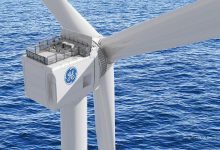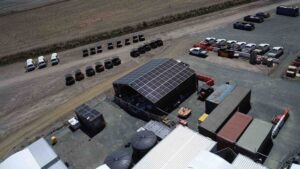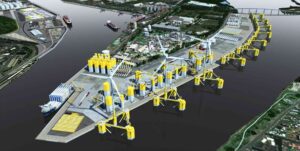GE Renewable Energy says it will deliver an upscaled version of its Haliade-X offshore wind turbine, with what it says will be a rated capacity of 14MW, to the third 1.2GW stage of the world’s biggest offshore wind project, Dogger Bank.
Construction for the first phase of the 3.6GW Dogger Bank offshore wind farm began earlier this year, focusing on the onshore infrastructure near the coastal village of Ulrome, in Yorkshire, England.
GE had already been confirmed as preferred supplier for the Dogger Bank Wind Farm back in October of 2019, and will deliver 12MW turbine for the first two stages.
But that turbine’s status as the world’s biggest was trumped in May of this year by Spanish-based Siemens Gamesa, which unveiled its SG 14-222 DD offshore wind turbine, a 14MW turbine which the company claimed could be upscaled to 15MW.
Spurred by the competition, GE announced in September that it had upgraded its Haliade-X to 13MW and then announced last week that it successfully upscaled it to 14MW.
“Dogger Bank C will use a 14MW version of the Haliade-X, the most powerful offshore wind turbine in operation today,” said John Lavelle, the head of fffshore wind at GE Renewable Energy.
“In doing so, this unique project will both continue to build on the UK’s leadership in offshore wind and serve as a showcase for innovative technology that is helping to provide more clean, renewable energy.”
Steve Wilson, Dogger Bank Wind Farm’s Project Director at SSE Renewables, added: “Together with GE we are continuing to lead the way on innovation in the offshore wind industry and we’re proud that Dogger Bank will now use a 14 MW turbine at Dogger Bank C alongside the 13 MW turbine already confirmed for phases A and B.”
The14MW Haliade-X turbines boast a 220-metre rotor and stands 248-metres tall with 107-metre-long blades and a 38,000 metre-square swept area. Siemen Gamesa’s SG 14-222 DD offshore wind turbine measures in with a 222-metre rotor, 108-metre-long blades, and a 39,000 m2 swept area.










